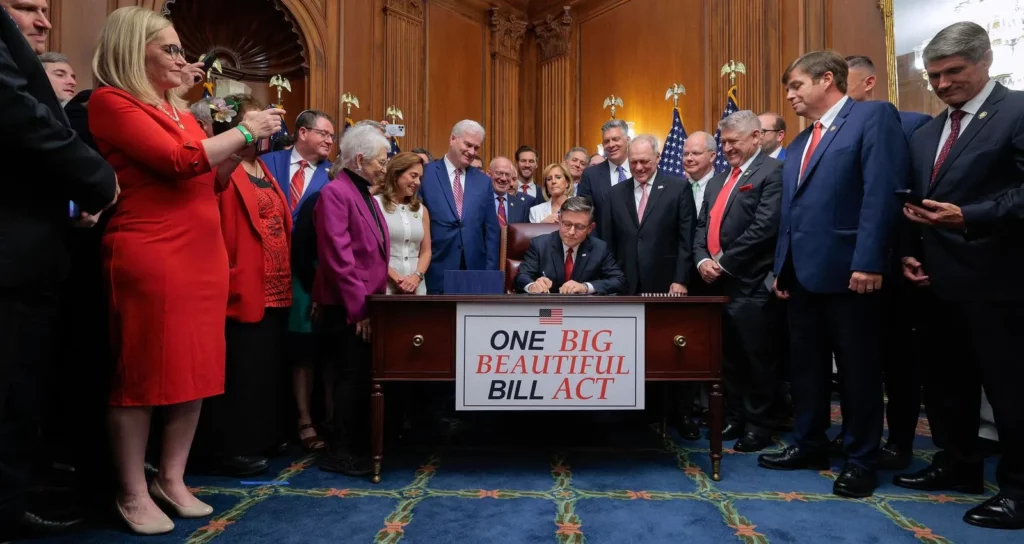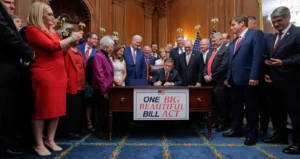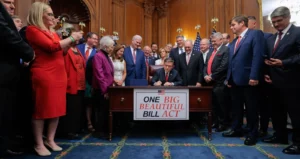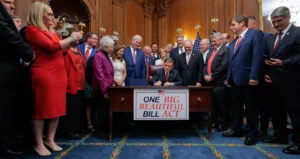
The One Big Beautiful Bill And The Case For Structural Reform In Healthcare Delivery
The passage of the so-called “One Big Beautiful Bill” has sparked a heated debate. Critics are warning about devastating Medicaid cuts and an influx of uninsured patients seeking emergency care, while others see a chance to reshape the healthcare system’s fundamental business model.
Behind the headlines lies a more profound question – what kind of healthcare delivery system do we wish to sustain, and should we continue to support it? The One Big Beautiful Bill doesn’t merely reflect a political shift but rather represents a structural reckoning. Instead of panicking over budget cuts, policymakers and industry leaders must confront the business model flaws that consistently undermine access, quality, and sustainability.
The bill’s provisions, such as work requirements, eligibility redeterminations every six months, and reductions in state-directed payments, all point toward a central tension: who should be covered, and under what circumstances? As I noted in my recent column, Medicaid was never designed to be a universal coverage program. It was intended as a limited safety net. Over time, its scope has expanded without corresponding improvements in efficiency or outcomes. The bill’s changes – while sudden – aim to recalibrate this imbalance.
Regardless of whether one agrees with the approach or not, it reflects growing unease with the assumption that more money and more enrollees necessarily equal better care. It might be helpful to separate rhetoric from operational implications. What Congress is grappling with is not merely budgetary; it’s structural. And until we address this issue, meaningful reform will remain elusive.
One of the few provisions in the bill that garnered bipartisan support was the $50 billion rural hospital relief fund. While urgently needed to halt the continued closure of rural facilities, this type of emergency infusion only reinforces a persistent problem: temporary financial lifelines often become permanent fixtures. Rural hospitals are in crisis – nearly half operate at a loss, and closures are accelerating. As I wrote in my May column, the collapse of rural healthcare isn’t just a public health issue but also a national security risk.
Yet throwing more money at a failing model is not a long-term solution. Instead of reflexively subsidizing every struggling facility, we must rethink delivery. A hub-and-spoke model that integrates pharmacies, local clinics, and telehealth can provide sustainable access without the overhead of legacy infrastructure. Stop-gaps only make sense when followed by structural change. Without such follow-through, they become another instance of the system’s addiction to band-aid solutions.
That deeper structural tension helps clarify why the hospital industry is so fiercely opposed to the bill. Hospitals are sounding the alarm over how funding cuts will lead to patient coverage losses and an increasingly vulnerable American public. However, much of their concern – honestly – revolves around how these cuts will impact their bottom line. As I explained in my June column, the anxiety isn’t merely that funding is disappearing; it’s that revenue streams hospitals have grown dependent on are being reevaluated.
This discomfort could prompt innovation rather than panic and a desire to cling onto the status quo. Many providers and advocates argue that coverage reductions are unacceptable since there “isn’t enough money” to care for everyone else. However, this assumes the system is already efficient – it isn’t. In my book Bringing Value to Healthcare, I estimated over $500 billion per year in waste. This estimate, grounded in data from 2016, has likely grown.
It’s not a matter of how much the government can afford to spend on healthcare; we should instead ask whether we are using our resources effectively. The resources exist; what is missing is accountability for how these dollars are spent.
The One Big Beautiful Bill has provoked both outrage and applause – as well as various opinions in between. However, most commentary overlooks the bigger picture. This isn’t just about Medicaid cuts or rural bailouts. It’s about a healthcare ecosystem on the verge of collapse: unsustainable, inefficient, and increasingly disconnected from value.
Source: www.forbes.com


